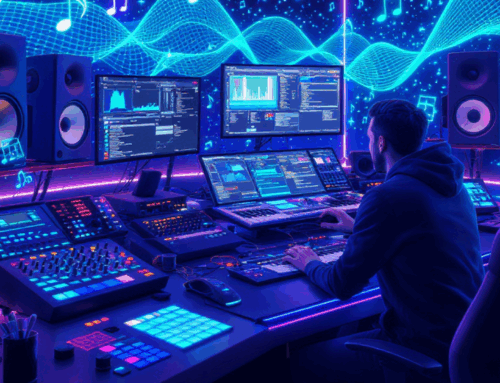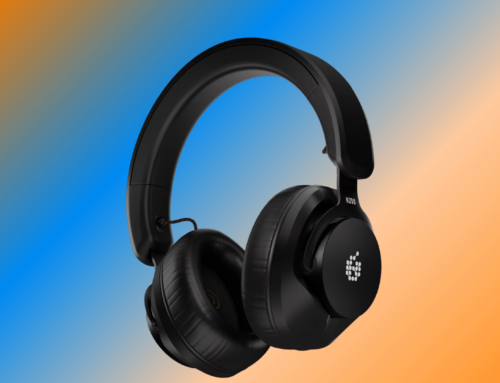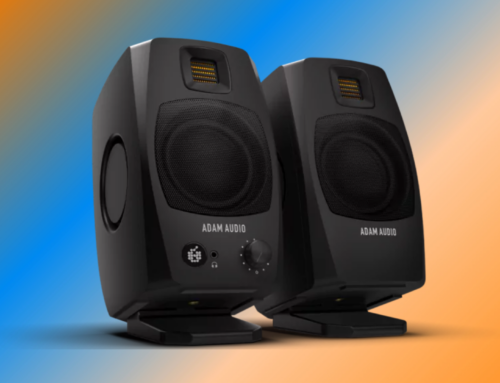 Live has offered native support of both proprietary third party hardware, and custom user scripts for generic controllers, for many generations. More recently we’ve seen Ableton partner with a handful of manufacturers to produce some long-awaited controllers dedicated to launching clips and handling channel and macro controls. Since opening up Live’s API to everyman with last year’s release of Max For Live, new software interfaces are beginning to surface that replace the knobs and faders with multitouch gestures, and have the potential to grow in ways a static hardware controller never can.
Live has offered native support of both proprietary third party hardware, and custom user scripts for generic controllers, for many generations. More recently we’ve seen Ableton partner with a handful of manufacturers to produce some long-awaited controllers dedicated to launching clips and handling channel and macro controls. Since opening up Live’s API to everyman with last year’s release of Max For Live, new software interfaces are beginning to surface that replace the knobs and faders with multitouch gestures, and have the potential to grow in ways a static hardware controller never can.
With support for two iPads out of the box, touchAble starts off very much on the right foot. More than any of its competition, touchAble aims to provide a complete solution to Live performance, offering control of not only the clip grid and mixer but device parameters, key and drum inputs and even some advanced set navigation – an ambitious undertaking.
The app only runs in landscape and sees the screen split into three sections. The top and bottom sections can be assigned to show the various modules with controls in a sidebar at the right hand side. This sidebar also includes navigation controls and buttons to bring up the app’s settings, as well as a slew of other controls: transport, cue and metronome; quantize, nudge, undo and redo; clip pitch, length and deactivate buttons. touchAble is nothing if not thorough.
The clip grid is what you’d expect, with clip names and colors being imported from Live. Arm and solo buttons live at the bottom of each channel, and touching the channel’s footer will mute it. The scene launcher runs down the right hand side and the big red stop button at the bottom acts as a safety switch: touching it once will bring up a second button that’s actually used to stop all clips.
The mixer is a little more complicated. In full-screen it can show eight or sixteen channels at a time, and a strip of buttons at right will switch the channel faders between volume, sends A through D, and pan. Another button, labelled Toggles, replaces the fader with buttons for solo and arm, resets for volume, all sends (not individual sends) and pan. The final button cycles between input monitor modes. That’s probably more control than you’ll need when you’re playing live, but it’s an impressively broad range of tools and should help ensure that whatever your workflow, you can move around in the app.
The Devices pane lists the devices on each track. Touching one will bring up a grid of either eight or 32 parameters, all in vertical faders. One nice exception to this is EQ Eight, which displays the actual curve window with handles that can be dragged around – although the curve itself isn’t visible. When needed, more parameters are accessed with bank up and down buttons and, in another nice touch, a Snap button will return any parameter back to its original value when you take your finger off the screen. This makes for some fun live play and it’s great to have access to this, literally, with your fingertips. There are some shortcomings, though: you can’t access individual devices within a Rack, for instance; there’s no support for third party VSTs (yet); I had some issues with refreshes after making changes directly in Live.
The keys and drums send MIDI on specifiable channels through a server app running on the host computer. You’ll get a little over an octave of keys in half-screen, with an overview at the top to let you scroll choose your octave. In full-screen you’ll get a second keyboard in the lower pane, giving you access to up to just under three octaves. There’s no velocity sensitivity, obviously, but you can choose a global velocity and then a sensitivity range that can be played with one hand while you key in a melody with the other. Unfortunately the output from this range fader was a bit choppy, and in real life it’s more predictable and consistent to record in a melody and then modify it back in Live. The drum pads, in a four by two or four by four grid, work in the same way and are automatically mapped to the Drum Rack, which is a fantastic bonus.
The final module is a really exciting programmable XY pad. Aside from the normal mode of tracing a ball across assignable X- and Y-axes, here you can apply gravity to the ball – orienting to any of eight directions, and bounce it around off the walls. You can juggle up to four balls at once, each with their own behavior and gravity orientation, you can change the force of gravity, and record and play back your automations. Perhaps best of all, eight snapshots at the right hand side will record the instantaneous location of each ball – these snapshots can then be manipulated in a variety of ways, including tempo-synced morphing between them. It’s by far the most innovative part of the package and is really the crowning glory of a very fully featured app.
All this functionality means there is a lot of data moving between the server and client apps, so you’ll need an adhoc network to minimize latency. touchAble is not without its flaws, but given the scope of its ambition and the range of features it brings to the table, it’s a damned impressive way to interact with your favorite DAW. The XY pad in particular is a new way to work with your music, and thanks to proactive development, it’s fair to hope for bigger and better things in future.




